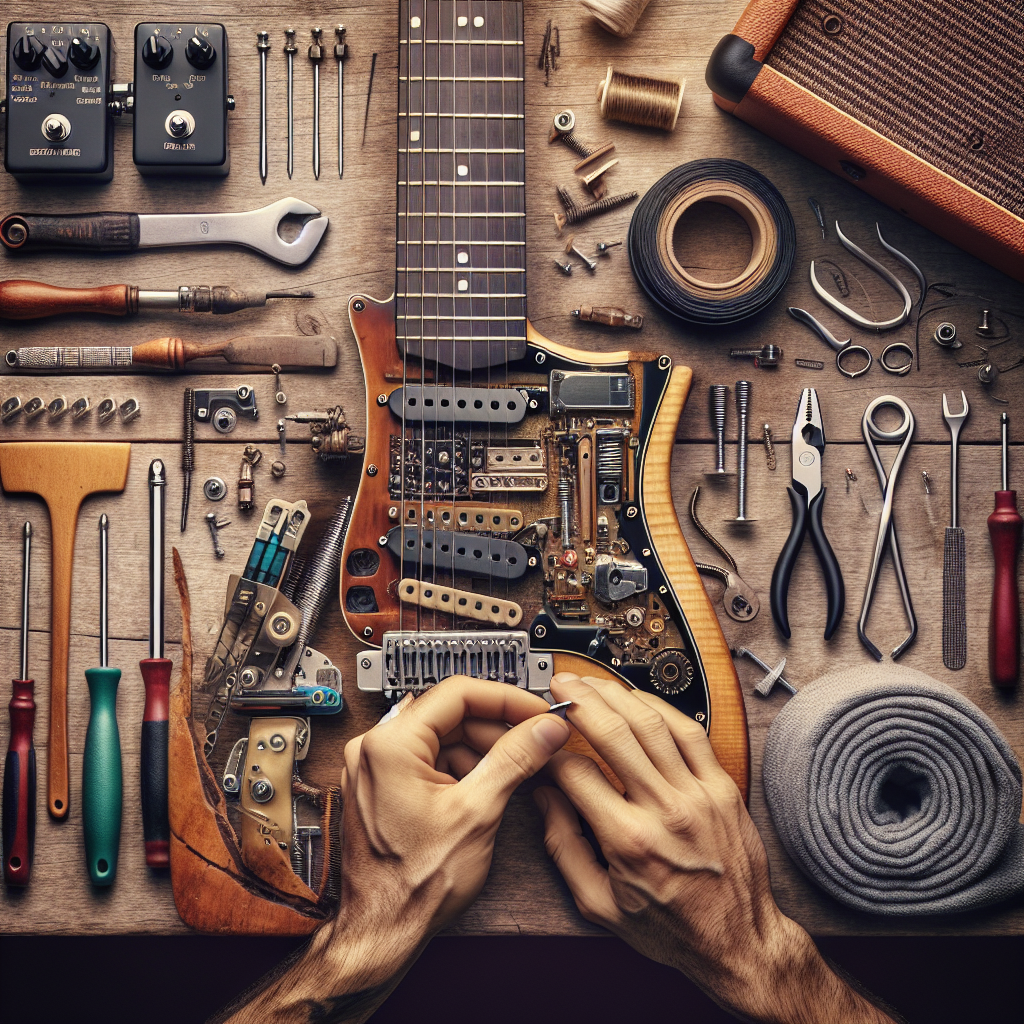
7 Proven Steps to Safely Clean Vintage Guitar Hardware
Maintaining the elegance and sound quality of a vintage guitar is crucial for every guitar enthusiast. Over time, the hardware on vintage guitars can accumulate grime, rust, and tarnish, which not only affects their appearance but can also impact their performance. Cleaning guitar hardware isn’t just for aesthetics; it is essential for preserving the instrument’s playability and value. In this guide, we’ll detail how to safely clean vintage guitar hardware, ensuring that your cherished instrument remains in optimal condition.
1. Assess the Condition
Before diving into the cleaning process, it’s important to assess the hardware’s condition. Examine your vintage guitar for any signs of damage or fragile areas that may require professional attention. Look for rust, corrosion, or loose fittings. This initial assessment will guide you in determining the appropriate cleaning approach.
2. Gather Necessary Materials
Proper preparation is key to safely cleaning vintage guitar hardware. Gather the following items:
- Microfiber cloths
- Soft-bristle toothbrush
- pH-neutral soap or gentle cleaning solution
- White vinegar or lemon juice (for dealing with rust)
- Cotton swabs
- Soft polish for metal parts
- Isopropyl alcohol (for tough grime)
Make sure the cleaning products are suitable for delicate metals and do not contain harsh chemicals that could damage the vintage hardware.
3. Dismantle the Hardware
If you’re comfortable, gently dismantle parts of the hardware, such as bridge, tuner pegs, and knobs, to access areas that require cleaning. Carefully keep screws and small components organized to ensure easy reassembly. If you’re unsure about dismantling parts, consider cleaning without disassembly or consult a professional.
4. Gently Clean the Parts
Dip a microfiber cloth into a mixture of warm water and a pH-neutral soap. Wring out excess liquid from the cloth, ensuring it is damp rather than soaking wet. Gently wipe down the hardware, using a soft-bristle toothbrush or cotton swabs to reach nooks and crannies. For rust treatment, apply a small amount of white vinegar or lemon juice to the corroded areas and let it sit before wiping it off.
5. Polish and Protect
After cleaning, use a soft metal polish to buff the hardware, enhancing its shine and offering a protective layer. Be cautious with the amount of polish applied, and make sure to thoroughly buff it off with a clean cloth to remove any residues. This step enhances the aesthetic appeal of the hardware and helps protect against future corrosion.
FAQs
1. Can harsh chemicals be used to clean vintage guitar hardware?
No, harsh chemicals can damage the finish and integrity of vintage guitar hardware. It’s best to use gentle, pH-neutral cleaning solutions specifically designed for delicate metal surfaces.
2. How often should I clean my vintage guitar hardware?
Regular maintenance is key. Depending on playing frequency and storage conditions, aim to clean your guitar hardware every 3 to 6 months.
3. What should I do if I notice rust on my vintage guitar hardware?
For minor rust, use white vinegar or lemon juice to loosen and clean it. For significant corrosion, it’s advisable to consult a professional luthier.
4. Is it necessary to dismantle hardware for cleaning?
While dismantling isn’t always necessary, it allows for a deeper clean. If unsure about reassembly, perform a surface clean or seek professional help.
5. How can I avoid damaging my guitar while cleaning the hardware?
Cover the guitar body with a cloth or towel when cleaning hardware to avoid accidental scratches or solvent spills.
6. Can household items like toothpaste be used for cleaning?
No, toothpaste can be abrasive and may scratch delicate metal surfaces. Stick to products formulated for musical instruments.
By following these steps, you ensure that your vintage guitar stays clean and functions optimally without compromising its historical and monetary value. Regularly maintaining your guitar’s hardware will not only keep it visually appealing but also uphold its legendary sound quality. For those tasks you’re unsure about, a professional’s touch can provide peace of mind. Embrace the journey of preserving your vintage gem, and enjoy every strum of that timeless sound.
Learn more about maintaining vintage guitars at Premier Guitar’s Vintage Instrument Care Guide.